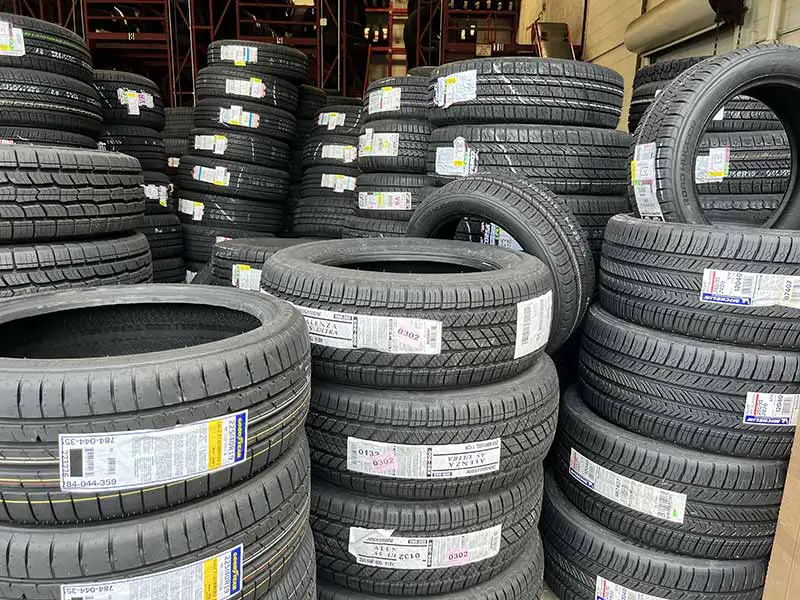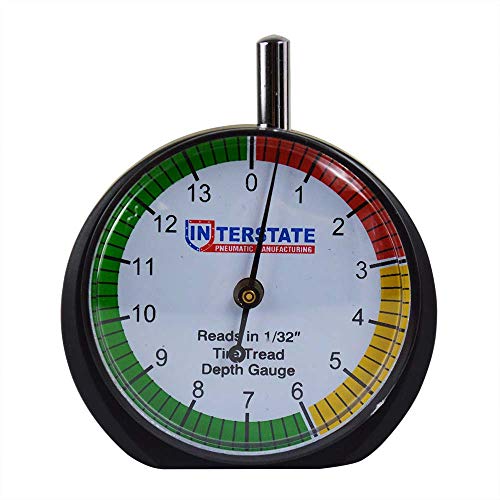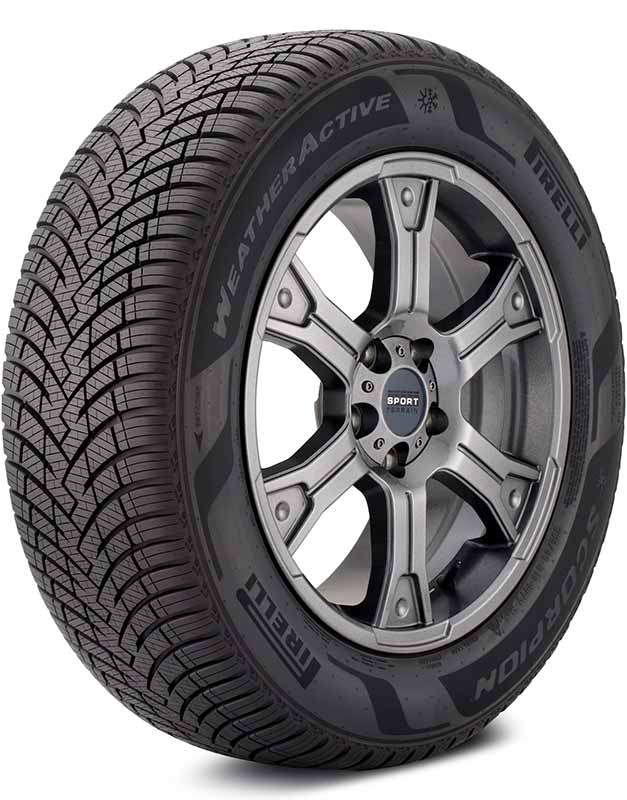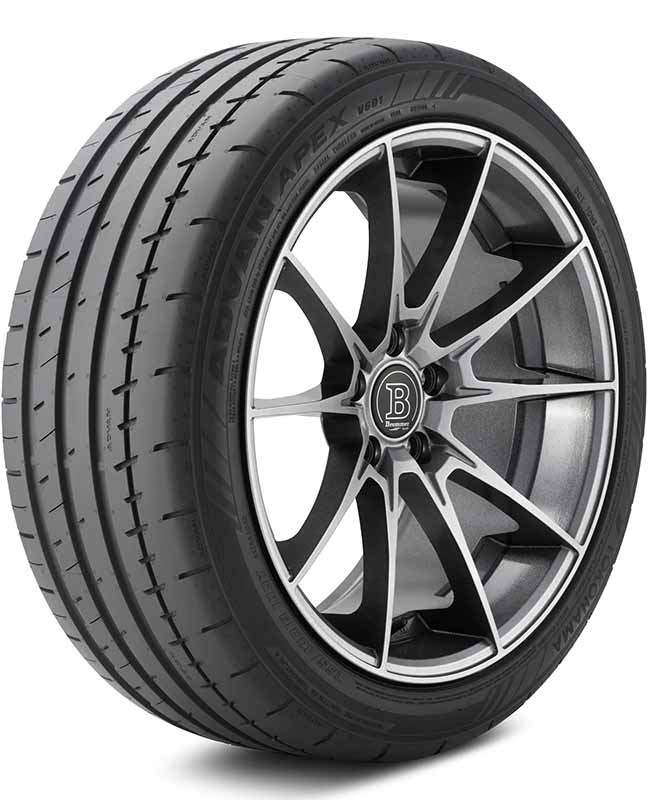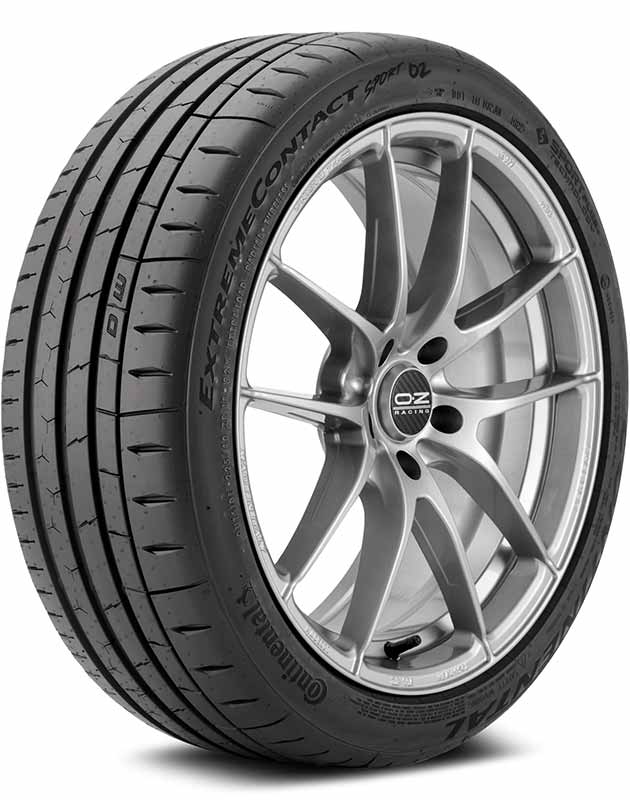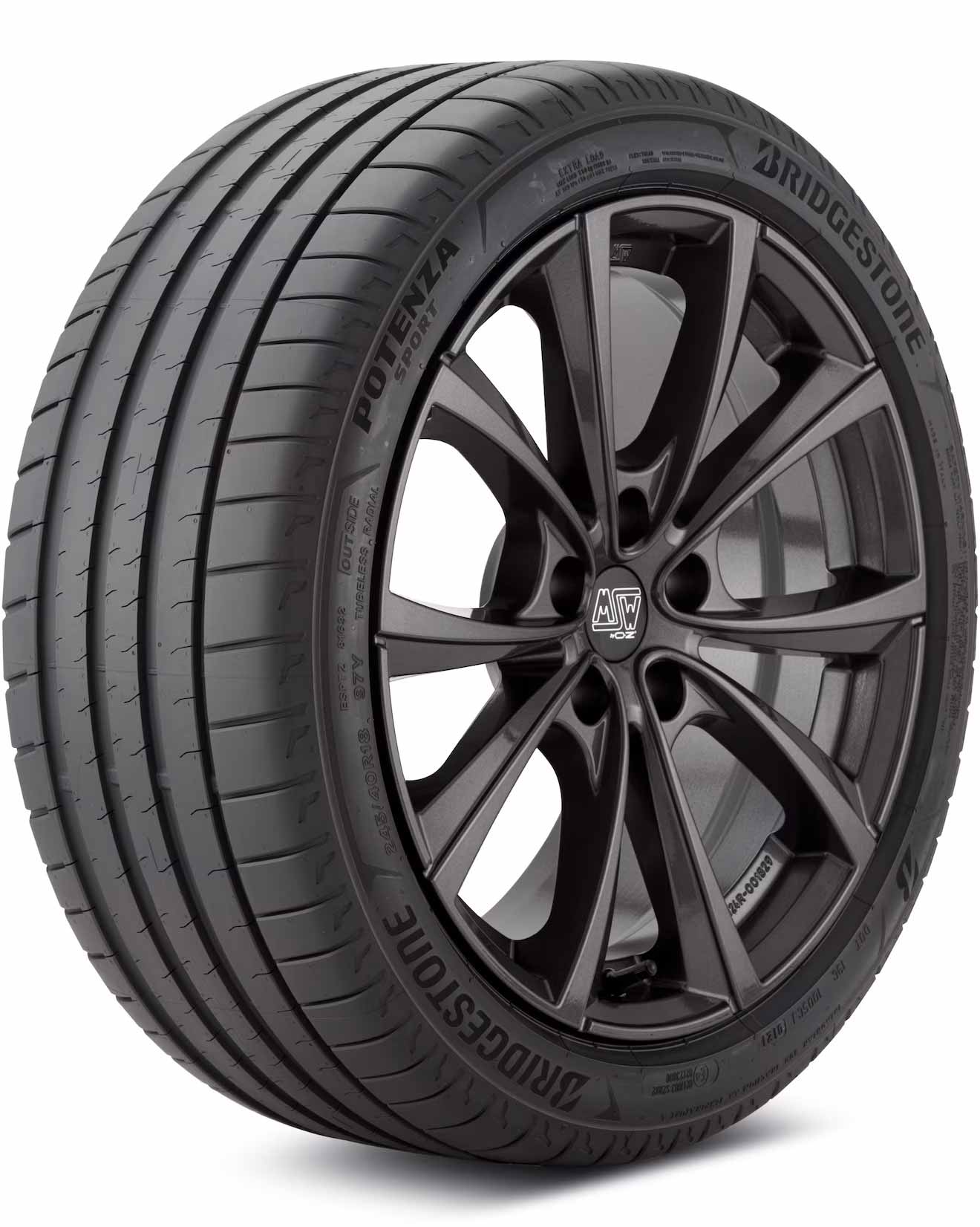Tire manufacturers do an amazing job of squeezing a lot of tread wear out of new tires.
While there are a lot of variables that affect how long tires last, the following guide can give you a reasonable idea of whether you have adequate tread that can properly maintain traction or if you need to consider picking up some new car tires.
This guide will allow you to measure the depth of your tread and get a good idea of how much life is left in your tires. You’ll also be able to get an idea of how much wet-braking performance they have lost as well so you can keep in mind your safety and the safety of your loved ones.
Tire Tread Life Expectancy Chart*
Download PDF
We should point out that winter tires and spare tires don’t follow along with this tire tread life expectancy chart. Winter tires should be replaced at 5/32″ of wear depth, and hopefully, it’s obvious that you shouldn’t be driving around on a spare tire.
This chart is just a rough guide, but we’ll add some more information to help you determine whether you need new tires or if your car tires can handle a few more miles.
Let’s take a closer look.
Tire Tread Life Calculator
It’s important to understand that tire life depends on driving style, vehicle type, road conditions, and proper tire maintenance, such as having your tires rotated and checking the air pressure in your tires regularly.
To use this Tread Life Calculator, input the tire mileage warranty guarantee along with the current tread wear depth.
These are rough estimates that assume average driving style, common vehicle type, and typical road conditions.
Tire Tread Depth Chart
This tread wear depth chart shows the acceptable tread measurements, measurements that are suggested to replace tires, and minimum safe tread level.
How To Measure Tire Wear
There are a few different methods for measuring how car tires wear to get an estimate of the remaining tire life:
Tire Wear Gauge
You can measure tire wear level easily with a tire depth gauge. These inexpensive tools are inserted into the deepest tread groove and measure the height of the adjacent tread block.
There are several different types of depth gauges used to measure tire wear. Some use a simple slide rule-type mechanism, while others are far more sophisticated and use a laser measurement device.
Most of these tools are very easy to use and will produce a reading measured in 1/32 of an inch.
Penny Test For Tire Tread
The penny test is a convenient method for periodically checking how your car tires wear.
It is performed by inserting a penny with Lincoln’s head upside down into the deepest tread groove.
- If the top of the tread doesn’t reach the top of Lincoln’s head, it’s time to replace your tires.
- If the top of the tread doesn’t reach Lincoln’s forehead, you should consider replacing your tires, but it isn’t mandatory yet.
- If the top of the tread reaches Lincoln’s forehead or beyond, you have an acceptable amount of tire life, and no action needs to be taken.
Average Tire Life In Miles
The average life of a typical all-season tire on a typical family sedan is 50,000 to 60,000 miles. This will obviously vary significantly based on driving habits, how well tire maintenance practices are performed, the type of vehicle the tires are installed on, and more.
For example, the typical lifespan of a set of tires on a Corvette driven by a teenager will be extremely short, assuming he or she doesn’t wrap it around a tree first. Grandma in her Oldsmobuick, whose driving habits consists of never exceeding 25 miles per hour on her way to church once a week, will likely last quite a bit longer.
No matter how many miles are able to be driven on a set of tires, they all have a shelf life of 6 years. The rubber compounds in tires will dry rot as they age and need to be replaced after they’ve reached approximately the six-year mark.
How Does Tire Tread Wear Depth Affect Braking Distance?
It’s important to understand how braking distances become much longer in wet weather conditions as tread depth gets lower and lower.
Low treads will have much more shallow grooves in the tire tread and will be much less capable of channeling water out and away from underneath the contact patch.
This essentially causes an exponential increase in stopping distance in the rain as tread depth becomes less and less.
When new tires are on your car or truck, the stopping distance is at the maximum the tire design is capable of performing.
Losing 1/32″ of tread depth will have little effect on the tire’s ability to bring your vehicle to a stop on a wet road surface.
When a tire has reached only 2/32″ of tread, some tires will take twice as long to come to a complete stop.
Tire Tread Depth To Pass Inspection
Tires will not pass inspection if they do not have at least 2/32″ of tread depth. Anything beyond this point will not pass inspection.
However, you shouldn’t wait until your tire tread reaches this shallow depth. While legally, you may be able to use tires with a depth of only 2 or 3/32″, the stopping distance in wet weather conditions can be double that of new tires.
It’s recommended to replace tires at 4/32″ of the tread. The cost savings are minimal, and the safety benefit is significantly more valuable that the value of 1/32″ of the tread.
Tire Mileage Warranty
Most tires will come with a tire mileage warranty from the tire manufacturer. This warranty will guarantee a certain number of miles of life from a tire.
If the purchaser does not achieve this amount of mileage, the miles driven are subtracted from the guaranteed mileage and a new set of tires can be purchased at a discount. The discount is the value of the number of miles that the tire purchaser was not able to use.
The tire wear warranty requires that proper maintenance of your tires is performed. This includes insuring your tires are properly inflated, wheels are properly balanced, and your tires are rotated on a minimum mileage interval.
UTQG Treadwear Grade
Uniform Tire Quality Grade (UTQG) is a set of three National Highway Traffic Safety Administration (NHTSA) measurements that are designed to give you an apples-to-apples comparison of tire performance between different types and brands of tires.
UTQG measures treadwear grade, traction, and temperature, and the ratings can be found on your tire’s sidewall.
Treadwear Ratings
One of the UTQG measurements is treadwear, and this is the one that is important to helping you determine tire tread life expectancy. Treadwear ratings are designed to give a measurement for how long a tire will last, but they don’t represent an actual mileage amount.
Treadwear is measured for a tire by comparing it to a standard tire which scores 100. Most tires these days score in multiples beyond the standard tire that was developed in the 1970s.
While these numbers won’t equal a certain number of miles that the tires will last, they do give a rough idea of how long-lasting a tire will be if you decide to purchase it.
Tire Treadwear Rating Chart (Mileage)
The good people at TireReview.com put together a treadwear rating chart that helps infer mileage based on the tire warranties of tires that fall within the various treadwear ratings.
The point of the TireReview article is to highlight the fact that these ratings are extremely inconsistent, have little to no government oversight, and are conducted by the tire manufacturers themselves, who are obviously a bit biased.
I have reviewed some of the most popular tires on the market currently and noticed a trend in how treadwear ratings and tire mileage guarantees line up with one another.
While this certainly shouldn’t be taken too literally, it definitely helps get some ballpark ideas of mileage as they relate to the different treadwear grade ratings.
How Many Miles Is A 800 Treadwear Rating
Treadwear 800 is often seen with a tire mileage warranty of 70,000 miles or greater
How Many Miles Is A 700 Treadwear Rating
Treadwear 700 is often seen with a tire mileage warranty of 60,000-70,000 miles
How Many Miles Is A 600 Treadwear Rating
Treadwear 600 is often seen with a tire mileage warranty of 50,000-60,000 miles
How Many Miles Is A 500 Treadwear Rating
Treadwear 500 is often seen with a tire mileage warranty of 40,000-50,000 miles
How Many Miles Is A 400 Treadwear Rating
Treadwear 400 is often seen with a tire mileage warranty of 30,000-40,000 miles
How Many Miles Is A 300 Treadwear Rating
Treadwear 300 is often seen with a tire mileage warranty of 20,000-30,000 miles
How Many Miles Is A 200 Treadwear Rating
Very few, if any, tires are sold with a treadwear rating of 200 which makes it unreasonable to make an estimation
How Many Miles Is A 100 Treadwear Rating
Very few, if any, tires are sold with a treadwear rating of 100 which makes it unreasonable to make an estimation
How To Increase Tire Life
To get the most out of your tires, you need to take care of them. Most drivers fail to do many of these tasks or suggestions. You’ll ensure that you meet or exceed the tire manufacturer’s mileage guarantee if you can follow these rules and manage to avoid accidents that can damage your tires and require you to replace your tires sooner.
- Avoid aggressive driving, such as quick acceleration, hard cornering, and hard braking.
- Slow down over speed bumps and avoid driving into potholes or curbs and curb stops.
- Regularly check that your tires are properly inflated to the air pressure on the tire information sticker in your driver’s door jamb or owner’s manual.
- Have your tires rotated every 5,000 miles.
- Have your wheels rebalanced and aligned every 10,000 miles?
Resources
Below are some links you may find helpful when learning about tires
Final Thoughts
Tires obviously wear when driving, and there’s no getting around the fact that you’ll need to replace them eventually. Even tires that never get used will begin to dry rot and need to be replaced at an absolute maximum of ten years.
Tires lose their ability to properly grip the road surface in wet weather conditions as they wear down. Understanding how this affects performance is important to make an informed decision on when to replace your tires.
Be sure to properly maintain your tires and keep an eye on how they wear so you can get the most out of them and be able to understand how their performance has degraded as they’ve worn down.
Good luck and happy motoring.
